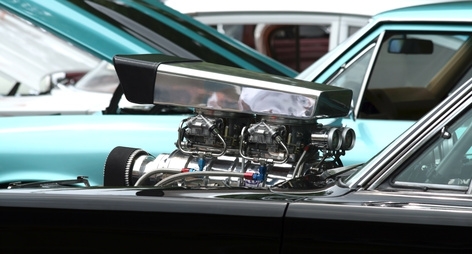
Superchargers produce power by shoving more air into the engine, which allows the engine to burn more fuel. The extra fuel releases more thermal energy, which translates into horsepower. The problem is that relatively little of the energy released by burning gasoline gets expressed as mechanical motion; the rest manifests as heat, which (for the most part) gets absorbed by the cooling system.
Add an in-line oil cooler. Oil temperature is just as, if not more, important as coolant temperature when it comes to supercharged engines. Oil, as a coolant, is actually far more pervasive than water; water always stays inside the water jackets, but oil touches almost everything in the motor. Several companies make oil cooler bypass plates that replace the oil filter with a tubing block, which sends pressurized oil to a small radiator before it returns to the engine.
Install a larger copper radiator. Nothing else you do to the engine will have any effect on its cooling capacity if you don't give the coolant enough time and opportunity to release energy. Aluminum radiators are lighter, but copper is a far better conductor of heat. Go for a wider and taller radiator over a thicker one.
Upgrade to a high capacity water pump. Second to the radiator, the water pump is the most important part of the cooling system. More water flow through the radiator means more thermal transfer from the engine to the outside atmosphere. High flow water pumps tend to lose efficiency at very high and very low RPMs (where superchargers will tend to overheat while sitting in traffic), so consider installing an electric unit instead.
Install an intercooler. Removing heat from the cooling system is only half the equation. Intake air will heat under compression from the supercharger; not only does that heat increase the possibility of detonation in the engine, it contributes to the thermal load in the cylinder. An intercooler will help to reduce coolant temperature by reducing the temperature of the combustion process itself.
Ceramic-coat the piston tops, combustion chamber roofs, exhaust ports and intake ports in the engine. Although this process requires disassembly of the engine, coating with ceramic does a number of things at once. Ceramic is an excellent insulator and will help to keep the combustion heat contained in the cylinder until it's ready to leave through the exhaust valve. That otherwise wasted thermal energy will increase pressure inside the combustion chamber, which translates to more horsepower.